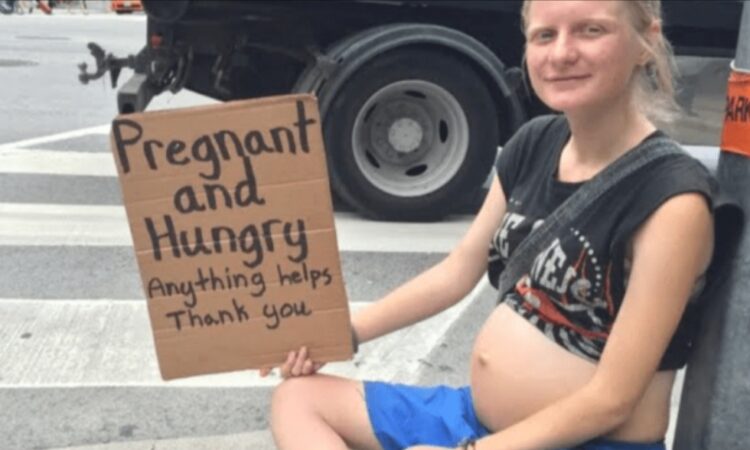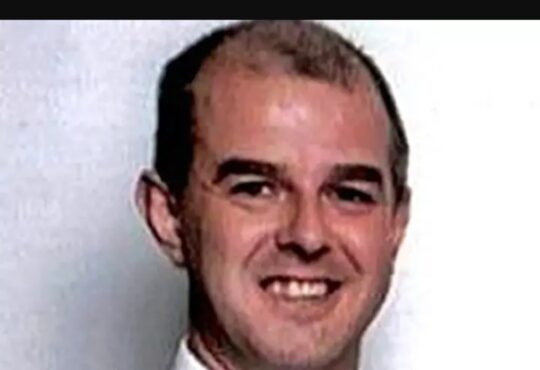Pregnant Beggar Was Asking for Help, But Then One Woman Followed Her And Discovered The Unexpected

Melissa Smith, a resident of San Diego, California, couldn’t help but notice a heavily pregnant woman begging outside a local shopping center.
The woman, often accompanied by a young boy, had become a familiar sight in the area. Dressed in stained clothes and standing for hours in the sun, she tugged at the heartstrings of passersby, who often gave her money, food, or drinks. Melissa, like many others, felt sorry for her.
She assumed the woman was homeless, struggling to provide for her son and unborn child. But something about the situation didn’t sit right with Melissa. She had a nagging feeling that something was off, and she couldn’t shake it.
One day, while running errands, Melissa noticed the pregnant woman wasn’t in her usual spot. Concerned, she hoped the woman was okay. Later, as Melissa stopped at a gas station, she spotted the woman again—this time, climbing into a sleek Mercedes-Benz. Melissa was stunned.
The car was expensive, spotless, and far from what she expected someone in dire need to be driving. Her curiosity turned to suspicion, and she decided to follow the car, recording everything on her phone.
Melissa trailed the Mercedes to another shopping center, where the woman and the boy got out and resumed begging. The man driving the car left, only to return later. Melissa’s suspicions grew stronger.
She began to suspect that the woman’s pregnancy and her story of hardship might be a scam. Determined to uncover the truth, Melissa took photos and videos of the woman and the boy. When they noticed her, they became aggressive, yelling and threatening her with rocks. A passerby called the police, and the woman and boy fled the scene.
But Melissa wasn’t ready to let it go. She posted her findings on social media, warning others about the potential scam. She also contacted a local news station, hoping to expose the truth. The story quickly gained traction, and journalists began investigating. Using Melissa’s photos and videos, they traced the car’s license plate and discovered it was registered to a woman living in a high-end apartment complex. The rent for the apartment was $2,500 a month—far beyond what a homeless beggar could afford.
As the story spread, more people came forward with information. It turned out that the woman and the man were part of an organized crime ring that used fake stories of hardship to scam people out of money. The woman’s pregnancy was likely fake, and the boy may not have even been her son. The group was known for moving frequently to avoid detection, and they often used children to gain sympathy and increase their earnings.
Investigative journalist Emily Valdez took a particular interest in the case. She tracked down the woman and confronted her, but the woman claimed she didn’t speak English. Valdez continued to investigate, eventually uncovering that the man with the woman was speaking Romani, a language associated with certain organized crime groups. Retired detective Leslie Albright, who had experience with such groups, confirmed that the couple was likely part of a larger network of scammers. These groups often exploited vulnerable women and children, forcing them to beg while the leaders lived in luxury.
The investigation revealed that the woman and others like her were part of a well-organized operation. They would make hundreds of dollars a day by pretending to be homeless and pregnant, while the leaders of the group pocketed most of the money. The children involved were often kept out of school and trained to continue the cycle of crime.
Melissa’s actions brought attention to the issue, but the problem was far from solved. The group was skilled at evading authorities, and despite the exposure, they continued their scams in different locations. An anonymous source on Reddit, who claimed to have insider knowledge, warned that the group would likely continue their operations unless more people came forward with information. They urged the public to report suspicious activity to the police and avoid giving money to panhandlers.
Melissa’s determination to uncover the truth had exposed a disturbing reality: not all beggars are who they claim to be. While many people genuinely need help, others exploit the kindness of strangers for profit. Melissa’s story served as a reminder to be cautious and to support legitimate charities and organizations that help those in need. But the question remained: how could such scams be stopped if the perpetrators continued to evade the law? For now, Melissa’s actions had at least brought the issue to light, prompting others to think twice before giving money to strangers on the street.





